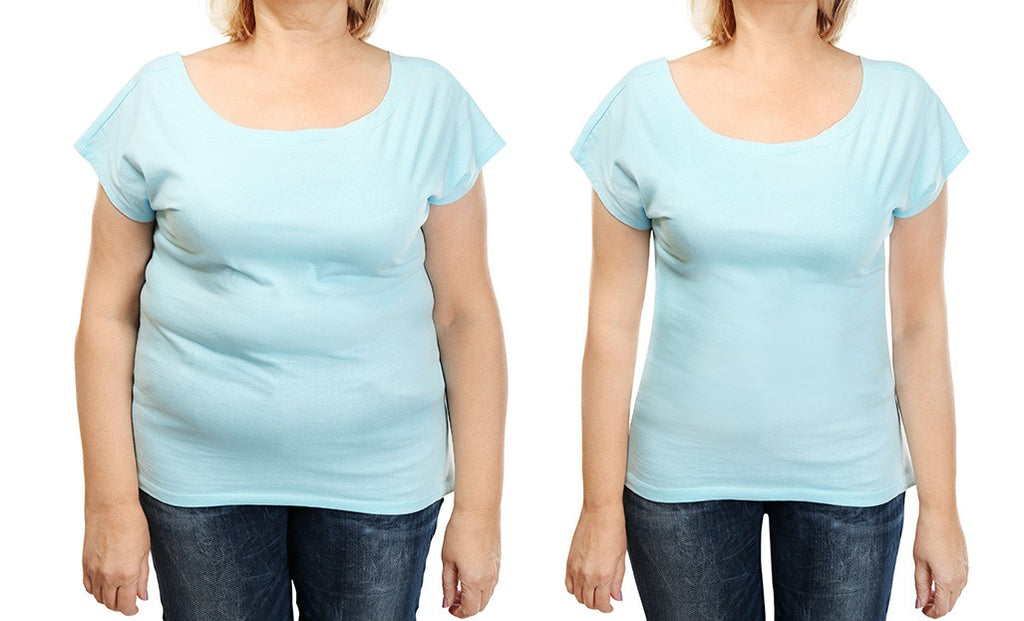What is Urinary Incontinence?
During urination, urine travels from the bladder through the urethra to exit the body. The pelvic floor muscles surrounding the urethra contract to prevent voiding, and relax when it is time to urinate.
Urinary incontinence is the accidental loss of urine. It is more prevalent in older women and can interfere with daily activities and quality of life.
Types of incontinence
Stress Incontinence
Leakage in stress incontinence occurs when the bladder muscles are not contracting and there is no urge to urinate. It is brought on by activities or movement which increases pressure inside the abdomen and the bladder. These include laughing, sneezing, coughing, jumping, or exercising. The muscles surrounding the urethra do not squeeze tightly enough and urine leaks out of the urethra.
Vaginal childbirth can affect the muscles of the pelvic floor and is among the major factors that can lead to stress incontinence. Additionally, age increases your risk – as a woman gets older, her pelvic floor and muscles in her urethra will weaken, which means less pressure is required for the urethra to allow for leakage.
Urgency Incontinence
This is when a very strong urge to urinate occurs at an unlikely or random place and time. There is no known clear cause underlying urgency incontinence. However, it is thought that the strong urge is brought on by a neurological cause whereby the brain-bladder connection triggers this sensation. Additionally, people who have neurological conditions which affect the nerves that travel from the brain to the bladder are more likely to experience urgency incontinence.
Overflow Incontinence
This type of incontinence occurs when the bladder does not completely empty. It can occur when the bladder muscles become underactive and there is no proper urge to urinate. The under-activity causes the bladder to become overfilled and distended. The urethra then opens, which results in urine leaking.
Mixed Incontinence
This is when both stress and urgency incontinence are involved. A urinary tract infection can cause mixed incontinence whereby someone may experience a strong and sudden urge to urinate at an unlikely time, in addition to experiencing leakage.
Diagnosing Incontinence
A detailed medical history is always taken when diagnosing urinary incontinence. Urinalysis will also be performed to rule out a urinary tract infection. A physical examination will be necessary to explore the pelvic anatomy and assess if there are any obvious or major physical factors which may be contributing to the problem.
Finally, a voiding diary will give more detailed information about:
- Amount of fluid consumed
- Frequency and urine output
- Sense of urgency
Medical Treatments
Medical treatments for bladder control problems, urinary incontinence (UI) and overactive bladder (OAB) include physical and behavioural therapies such as Kegel’s pelvic floor exercises and bladder retraining. Drug medications are available and rely predominantly upon anticholinergic actions. These medications have a drying effect in the bladder and elsewhere; additionally, they have common side effects including dry mouth, constipation, blurred vision, nausea, abdominal pain, drowsiness and memory loss. Nerve damage may be involved with urinary incontinence, so medical assessment of the type of bladder problem is recommended. Surgery may also be an option for some sufferers.
The Natural Alternative
As with many health conditions, nature has provided us with a range of natural solutions which are now clinically proven, safe and effective.
Herbal approaches to bladder problems that improve the tone and tissue strength of the bladder and the surrounding area are proving to be effective – both in the short and long term. A unique product called Happy Bladder is a combination of three herbal medicines which have clinically been shown to improve the following symptoms.
Bladder Support
Clinical research shows that Happy Bladder decreases urinary frequency, urgency, accidents and nocturia. Crateva nurvala, an Ayurvedic herb, has been used for many centuries for urinary support and to help with diseases of the bladder. It has tonic effects on the bladder and is recommended for poor bladder tone and symptoms of incontinence.
Incontinence / Overactive Bladder
Crateva and Horsetail help to improve the tone of the bladder wall. Crateva has beneficial effects on neurogenic bladder and post-prostatectomy atony of the bladder. It is shown to produce a significant reduction in urinary symptoms of frequency, incontinence, pain and retention of urine in men with hypotonic bladder as a result of benign prostatic hypertrophy. Crateva also acts to increase the tone of the bladder and the expulsive force of urine, thereby helping effective evacuation and significantly decreasing residual urine volume.
Crateva has likewise been shown to increase the tone of both smooth and skeletal muscle in vitro. Animal studies support this, with 40 days of treatment producing a dramatic improvement in bladder control.
Research also supports the effectiveness of Crateva and Horsetail combined for bladder control. A pilot study using this combination showed improvements in bladder frequency, leakage, urgency and bladder pain or discomfort, with over 80% of participants experiencing a reduction in symptoms. A larger-scale placebo-controlled trial also demonstrated improved bladder symptoms of incontinence, frequency, nocturia, urgency and bladder discomfort, with 85% of participants finding improvement after using this same combination.
Lindera has a long history of use in traditional Chinese Medicine for kidney and bladder health. Specifically, it is used to treat frequent urination and loss of bladder control. Lindera is also recommended for the treatment of renal disease.
A recent randomized double-blind, placebo-controlled trial confirms Happy Bladder reduces urinary frequency, urgency, nocturia and bladder accidents.

Quality of Life
Poor bladder control is shown to negatively impact on emotional health and reduce the quality of life for the sufferer. Research shows that Happy Bladder significantly improved quality of life measures including feeling less frustrated, increased social activities and better travel.
Summary
Urinary incontinence can have significant impacts on an individual's quality of life. Simple solutions are available, not to cure, but safely and effectively manage symptoms. Our practitioner team can answer and questions you may have to assist you in managing any symptoms associated with urinary incontinence.
REFERENCES
Alison Bardsley, An overview of urinary incontinence, British Journal of Nursing VOL. 25, NO. 18, Published Online: 13 Oct 2016. https://doi.org/10.12968/bjon.2016.25.18.S14
Emily S Lukacz, Yahir Santiago-Lastra, Michael E Albo, Linda Brubaker, Urinary Incontinence in Women: A Review, JAMA, 2017 Oct 24;318(16):1592-1604.
https://jamanetwork.com/journals/jama/article-abstract/2658327
Yashini Govender, Iwona Gabriel, Vatche Minassian, Raina Fichorova, The Current Evidence on the Association Between the Urinary Microbiome and Urinary Incontinence in Women, Infect Microbiol, 2019 May 1;9:133.
https://doi.org/10.3389/fcimb.2019.00133























